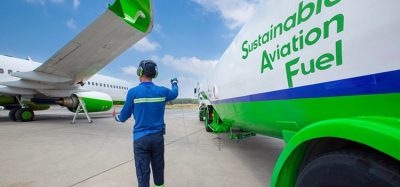ACI-NA welcomes $8 billion COVID-19 relief proposal for U.S. airports
- Like
- Digg
- Del
- Tumblr
- VKontakte
- Buffer
- Love This
- Odnoklassniki
- Meneame
- Blogger
- Amazon
- Yahoo Mail
- Gmail
- AOL
- Newsvine
- HackerNews
- Evernote
- MySpace
- Mail.ru
- Viadeo
- Line
- Comments
- Yummly
- SMS
- Viber
- Telegram
- Subscribe
- Skype
- Facebook Messenger
- Kakao
- LiveJournal
- Yammer
- Edgar
- Fintel
- Mix
- Instapaper
- Copy Link
Posted: 11 February 2021 | International Airport Review | No comments yet
The U.S. House of Representatives has outlined a proposal for a new round of COVID-19 relief for U.S. airports, with ACI-NA thanking them for the “much-needed funds”.


Airports Council International-North America (ACI-NA) has released a statement in response to the U.S. House of Representatives’ latest COVID-19 relief proposal that provides $8 billion for U.S. airports.
“On behalf of U.S. airports, we thank House leaders for including much-needed funds for airports in their latest COVID-relief bill,” said ACI-NA’s President and CEO, Kevin M. Burke. “Without any clear projections for when people will resume air travel, American airports continue to suffer unsustainable financial losses from the steep and prolonged downturn in commercial aviation. Airports have assumed enormous new costs to ensure the health and safety of their terminals for passengers and workers alike at a time when the industry continues to lose billions of dollars a year into the pandemic, and the prospects for recovery are increasingly uncertain.”
ACI-NA has projected that U.S. airports will lose at least $17 billion between April 2021 and March 2022 because of the prolonged decline in commercial aviation traffic resulting from the COVID-19 pandemic. These losses are in addition to the $23 billion that U.S. airports are expected to lose between March 2020 and March 2021. The year-ahead total could grow if the pandemic continues to depress air travel around the world.
Passenger traffic at U.S. commercial airports remains well below levels forecasted before the global pandemic. These low volumes are expected to continue until there is widespread distribution of vaccines for COVID-19. In 2020, passenger traffic was down by approximately 65 per cent from pre-pandemic projections. Current estimates predict that passenger traffic in 2021 will be roughly 40 per cent lower than pre-pandemic projections. In total, U.S. airports will see more than a billion fewer passengers over this two-year period because of the pandemic.
The latest loss estimate is based on the following estimates:
- $11.4 billion in lost airport operating revenue: The steep and prolonged drop in commercial passenger traffic has erased billions in aeronautical and non-aeronautical revenue, all while the cost of operating an airport remains largely unchanged because airports are not allowed to close or relocate terminals during the pandemic
- $3.5 billion for additional operational and infrastructure costs related to COVID-19: Airports adopted a wide range of new health and safety standards and made substantial investments in new technology, equipment and retrofits to their facilities to slow the spread of COVID. Airports increased the cleaning of public areas, upgraded filtration systems, added more hand sanitising stations, installed plexiglass barriers, procured personal protective equipment (PPE), created space for screenings and quarantine areas and implemented physical distancing measures. These facility upgrades and increased operating expenses are expecting to cost airports $3.5 billion from April 2021 through March 2022
- $1.6 billion from lost Passenger Facility Charge (PFC): The drop in passenger traffic has dramatically reduced the collection of user fees that are a critically important funding source for commercial airports in the U.S. This will likely slow or limit critical infrastructure improvement projects
- $500 million from lost Customer Facility Charge (CFC) user fees: Decreased passenger activity is projected to lower collection of these user fees by $500 million. CFC fees had become a significant source of funding for rental car facilities.
Additionally, U.S. airports’ debt burden has been steadily increasing for the past two decades. Total outstanding debt for U.S. commercial airports at the end of their 2019 fiscal year hovered close to $107 billion. U.S. airports are on the hook to pay approximately $16 billion to service that debt for their 2020 and 2021 fiscal years. Airports will be forced to make those payments regardless of traffic or revenue. These cash flow concerns will significantly constrain airports’ ability to fund capacity improvements to plan for long-term future growth. Further, most airports have made significant investments over the last year to retrofit their terminals and upgrade health and sanitation practices in order to limit the spread of COVID-19.
Related topics
Aeronautical revenue, Airport crisis management, COVID-19, Economy, Funding and finance, Passenger volumes, Regulation and Legislation


















